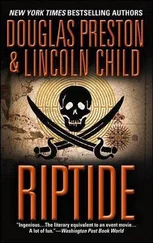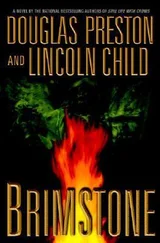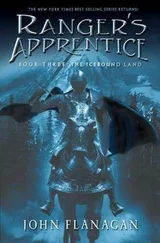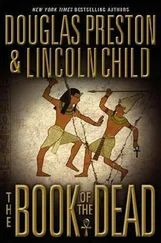Lincoln Child dedicates this book to his daughter,
Veronica
Douglas Preston dedicates this book
to Walter Winings Nelson, artist, photographer, and
partner in adventure.
Acknowledgments
The authors would like to acknowledge Commander Stephen Littfin, United States Naval Reserve, for his invaluable help with the naval aspects of The Ice Limit . Our deep gratitude also goes out to Michael Tusiani and Captain Emilio Fernandez Sierra, who corrected various tanker-related elements of the manuscript. We would also like to thank Tim Tiernan for his advice on metallurgy and physics, the meteorite hunter Charlie Snell of Santa Fe for information on how meteorite hunters actually operate, and Frank Ryle, senior structural engineer at Ove Arup & Partners. We also want to express our appreciation to various other anonymous engineers who shared with us confidential engineering details related to moving exremely heavy objects.
Lincoln Child would like to thank his wife, Luchie, for just about everything; Sonny Baula for the Tagalog translations; Greg Tear for being such an eager and competent critic; and his daughter, Veronica, for making every day precious. Also, thanks to Denis Kelly, Malou Baula, and Juanito "Boyet" Nepomuceno for their various and sundry ministrations. And my heartfelt gratitude to Liz Ciner, Roger Lasley, and especially George Soule, my adviser (had I but known it!) all this last quarter century. May the warm enlightening sun shine always upon Carleton College and its progeny.
Douglas Preston would like to thank his wife, Christine, and his three children, Selene, Aletheia, and Isaac, for their love and support.
We also wish to thank Betsy Mitchell and Jaime Levine of Warner Books, Eric Simonoff of Janklow & Nesbit Associates, and Matthew Snyder of CAA.
THE
ICE LIMIT

Isla Desolación,
January 16, 1:15 P.M.
THE VALLEY that had no name ran between barren hills, a long mottled floor of gray and green covered with soldier moss, lichens, and carpha grasses. It was mid-January — the height of summer — and the crevasses between the patches of broken rock were mortared with tiny pinguicula flowers. To the east, the wall of a snowfield gleamed a bottomless blue. Blackflies and mosquitoes droned in the air, and the summer fogs that shrouded Isla Desolación had temporarily broken apart, allowing a watery sunlight to speckle the valley floor.
A man walked slowly across the island's graveled flats, stopping, moving, then stopping again. He was not following a trail — in the Cape Horn islands, at the nethermost tip of South America, there were none.
Nestor Masangkay was dressed in worn oilskins and a greasy leather hat. His wispy beard was so thick with sea salt that it had divided itself into forked tips. It waggled like a snake's tongue as he led two heavily burdened mules across the flats. There was no one to hear his voice commenting unfavorably on the mules' parentage, character, and right to existence. Once in a while the complaints were punctuated with the thwack of a sucker rod that he carried in one brown hand. He had never met a mule, especially a rented mule, that he liked.
But Masangkay's voice held no anger, and the thwacks of his sucker rod held little force. Excitement was rising within him. His eyes roamed over the landscape, taking in every detail: the columnar basaltic escarpment a mile away, the double-throated volcanic plug, the unusual outcropping of sedimentary rock. The geology was promising. Very promising.
He walked across the valley floor, eyes on the ground. Once in a while a hobnailed boot would lash out and kick a rock loose. The beard waggled; Masangkay grunted; and the curious pack train would move on once again.
In the center of the valley, Masangkay's boot dislodged a rock from the flat. But this time he stopped to pick it up. The man examined the soft rock, rubbing it with his thumb, abrading small granules that clung to his skin. He brought it to his face and peered at the grit with a jeweler's loupe.
He recognized this specimen — a friable, greenish material with white inclusions — as a mineral known as coesite. It was this ugly, worthless rock that he had traveled twelve thousand miles to find.
His face broke into a broad grin, and he opened his arms to heaven and let out a terrific whoop of joy, the hills trading echoes of his voice, back and forth, back and forth, until at last it died away.
He fell silent and looked around at the hills, gauging the alluvial pattern of erosion. His gaze lingered again on the sedimentary outcrop, its layers clearly delineated. Then his eyes returned to the ground. He led the mules another ten yards and pried a second stone loose from the valley floor with his foot, turning it over. Then he kicked loose a third stone, and a fourth. It was all coesite — the valley floor was practically paved with it.
Near the edge of the snowfield, a boulder — a glacial erratic — lay atop the tundra. Masangkay led his mules over to the boulder and tied them to it. Then, keeping his movements as slow and deliberate as possible, he walked back across the flats, picking up rocks, scuffing the ground with his boot, drawing a mental map of the coesite distribution. It was incredible, exceeding even his most optimistic assumptions.
He had come to this island with realistic hopes. He knew from personal experience that local legends rarely panned out. He recalled the dusty museum library where he had first come across the legend of Hanuxa: the smell of the crumbling anthropological monograph, the faded pictures of artifacts and long-dead Indians. He almost hadn't bothered; Cape Horn was a hell of a long way from New York City. And his instincts had often been wrong in the past. But here he was.
And he had found the prize of a lifetime.
Masangkay took a deep breath. He was getting ahead of himself. Walking back to the boulder, he reached beneath the belly of the lead packmule. Working swiftly, he unraveled the diamond hitch, pulled the hemp rope from the pack, and unbuckled the wooden box panniers. Unlatching the lid of one pannier, he pulled out a long drysack and laid it on the ground. From it he extracted six aluminum cylinders, a small computer keyboard and screen, a leather strap, two metal spheres, and a nicad battery. Sitting cross-legged on the ground, he assembled the equipment into an aluminum rod fifteen feet long, with spherical projections at either end. He fitted the computer to its center, clipped on the leather strap, and slapped the battery into a slot on one side. He stood up, examining the high-tech object with satisfaction: a shiny anachronism among the grubby pack gear. It was an electromagnetic tomographic sounder, and it was worth over fifty thousand dollars — a ten-thousand down payment and financing for the rest, which was proving to be a struggle to pay off atop all his other debts. Of course, when this project paid off, he could settle with everyone — even his old partner.
Masangkay flicked the power switch and waited for the machine to warm up. He raised the screen into position, grasped a handle at the center of the rod, and let the weight settle around his neck, balancing the sounder the way a high-wire artist balances his pole. With his free hand he checked the settings, calibrated and zeroed the instrument, and then began walking steadily across the long flat staring fixedly at the screen. As he walked, fog drifted in and the sky grew dark. Near the center of the flat, he suddenly stopped.
Masangkay stared at the screen in surprise. Then he adjusted some settings and took another step. Once again he paused, brow furrowed. With a curse he switched the machine off, returned to the edge of the flat, rezeroed the machine, and walked at right angles to his previous path. Again he paused, surprise giving way to disbelief. He marked the spot with two rocks, one atop the other. Then he walked to the far side of the flat, turned, and came back, more quickly now. A soft rain was beading on his face and shoulders, but he ignored it. He pressed a button, and a narrow line of paper began spooling out of the computer. He examined it closely, ink bleeding down the paper in the mist. His breath came faster. At first he thought the data was wrong: but there it was, three passes, all perfectly consistent. He made yet another pass, more reckless than the last, tearing off another spool of paper, examining it quickly, then balling it into his jacket pocket.
Читать дальше












